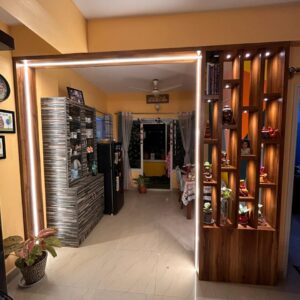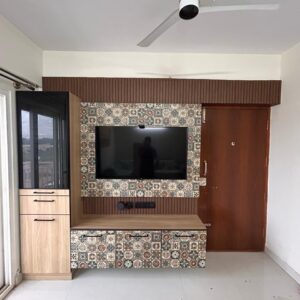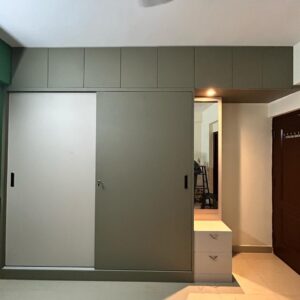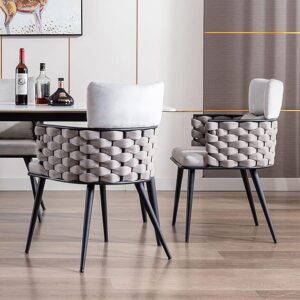WORK STATION
₹6,000.00
Design and Structure:
-
Desk Surface:
-
The core element of a workstation is the desk or work surface. It can be made from a variety of materials, including wood, metal, glass, or laminate. A good work surface is spacious enough to accommodate necessary equipment like computers, papers, books, and office supplies.
-
Ergonomics are a major consideration in modern workstation designs, with desks designed to keep everything within reach to minimize strain. Height-adjustable desks are popular for promoting standing while working, reducing the health risks associated with sitting for long hours.
-
-
Seating:
-
A comfortable, ergonomic office chair is an integral part of any workstation. These chairs are adjustable, with features like lumbar support, armrests, and seat height adjustments to ensure that the user maintains a healthy posture while working.
-
In some workstations, particularly in creative or collaborative environments, seating may be flexible, such as stools, lounge chairs, or even standing desks.
-
-
Storage Solutions:
-
Many workstations incorporate storage units like drawers, filing cabinets, or shelving to organize documents, office supplies, and personal items. This helps maintain a clutter-free environment.
-
Some desks come with built-in drawers or compartments to store paperwork, while others may feature modular storage units that can be customized to meet the worker’s needs.
-
-
Lighting:
-
Task lighting is crucial in any workstation to reduce eye strain and improve focus. This can be provided by desk lamps, overhead lighting, or adjustable light panels. The light should be bright but soft, avoiding glare on screens or documents.
-
Some modern workstations also include ambient lighting features to create a comfortable and motivating atmosphere.
-
-
Technology Integration:
-
A modern workstation often includes integrated technology to support various tasks. This includes a computer or laptop, monitors, keyboards, and ergonomic accessories like mouse pads with wrist support.
-
Cable management systems are built into many desks to keep wires and cables organized and out of sight, improving the aesthetic and reducing clutter.
-
Some workstations have built-in power outlets or USB charging stations for easy access to power and data connections.
-
Types of Work Stations:
-
Office Workstation:
-
Typically used for administrative, creative, or technical work, these are equipped with a computer, phone, and a set of tools necessary for office tasks.
-
Modern office workstations often feature minimalist designs, with enough space for a computer, a notepad, and personal items.
-
These stations may be located in a cubicle, an open office space, or a private office, depending on the company’s layout and the employee’s role.
-
-
Collaborative Workstations:
-
Designed to promote teamwork and collaboration, these workstations may include larger tables or shared desks where multiple employees can work together on projects.
-
Features include movable partitions or screens for privacy, large whiteboards for brainstorming, and access to technology for group work.
-
-
Creative Workstation:
-
For artists, designers, or architects, a creative workstation might include larger flat surfaces for drawing, drafting, or working on models, in addition to a computer and software.
-
Often equipped with specialized tools like drafting tables, printers, lightboxes, or graphic tablets, these stations cater to creative professionals needing space for both digital and physical creation.
-





Reviews
There are no reviews yet.